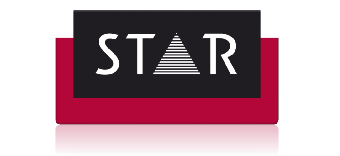Translation cost control techniques.
In an ever demanding global market place managing your operations project scalability and cost base are paramount to success. We typically save our customers 40% on translation costs over repeat projects. The margin of the price per word for pure text localisation is low, approximately of 5-10%. Seeking to negotiate lower prices from localisation vendors is not feasible without an unacceptable loss in quality. Instead, the trend is for vendors to seek additional revenue from hourly billed activities for example, desktop publishing (DTP) or file management and other services such as globalization assessments and centralized project management.
In addition to cost pressures, you may be under mandate to reduce headcount or operate within the constraints of a ‘headcount freeze’. STAR Technology Director Paul Quigley relates that “working with a number of software publishers, we have seen a typical internal to outsourced cost split of 60/40%.
The outsourced 40% is split by the localisation vendor a further 30/70%, with 30% representing the management and engineering cost and 70% representing the cost of translation. So, of each $1 spent on localisation only twenty-eight cents is spent on translating the words.”
Through our expertise, you can lower costs of localisation and control headcount while increasing project scope, quality and decreasing time to market. The underlying tenet of the STAR approach is the use of automation and tools technology, combined with common sense. STAR is expert in the creation of automated localisation processes and implementation of these techniques. The bottom line is more localisation for less money!
We assume that the source language is English, however these techniques can be adopted for any source-target language combinations.
TREAT LOCALIZATION AS A BUSINESS PROCESS
Inform work colleagues to treat localisation as a business process, just like any other activity critical to the bottom line. Any strings in a file can be translated, but not through a scalable, automated and cost-effective localisation process.
Adopt basic acceptance criteria for localisation:
- Is the product internationalised?
- Can the source files or externalised strings be safely and easily localised by an off-the-shelf process?
- Can the existing localised strings and sizing coordinates be leveraged as the source files change between updates? That means no one-off, throwaway localisation projects anymore!
- If you are developing Asian projects are
- All your software libraries both internal and 3rd party DBCS enabled?
- Are all your translation vendors’ tools DBCS compatible?
We are experts in working with companies to define their process acceptance criteria and enforce automatic compliance standards that are easily maintained and cost-effective.
DEFINE YOUR DATA
Typically, documentation projects represent the biggest localisation spend because of the sheer number of words. Whether it is online help or documentation, the per word cost of localisation could represent as much as 80% of your localisation budget, presenting a prohibitive barrier to market entry.
Start by asking two related questions.
- Should there be documentation written in the source language?
- Should it be localised?
- The answers to these questions are not the same. It is an expensive mistake to believe that everything written in English must be localised, for example.
Once you are satisfied that documentation should be written (because the product’s user interface cannot be made more intuitive, for example), adopt a selective localisation approach
- The answers to these questions are not the same. It is an expensive mistake to believe that everything written in English must be localised, for example.
Structure the information in your documentations into discrete content “buckets” based on a small number of audience user types. For example, three categories of user might be considered:
- Deployment
- Deployment information may not need to be localised if it deals with installation, implementation, consulting solutions or developer related content dealing with APIs, code samples, development tools and techniques, etc. In many cases, this is best left in English
- Maintenance and Self-service
- Maintenance information deals with infrequently performed tasks such as changing how a business operates (such as adding employees to a database, reconfiguring servers, archiving data, etc.) and has a smaller audience. This can be localised if the revenue stream justifies it
- Self-service information is typically task-related; describing procedures on how to perform the key functions for which the software is intended. This kind of information has a wide audience and should be localised
Using XML to define your data facilitates a selective approach and the decision-making on whether the costs for localising each type are justifiable. Such data definition is not only logical but flexible too. It can be varied according to market requirements and conditions.
We can help you to define your data using a DTD; allowing audience attributes to be applied to elements and an XSL transformation to select localisable elements and port them to an easily localisable medium such as the XML Localisation Interchange File Format (XLIFF).
SORTING
Alphabetically sorted files are painfully costly to produce once localised. This is because languages contain different characters and numbers of characters. Once localised, information needs to be resorted, extra characters added, redundant ones deleted and so on. Anyone who has tried to sort HTML alphabetically will testify to the cost and time involved.
Instead, eliminate alphabetically based sorting from the file system. Externalise alphabetically sorted content into a database and use the NLS collating sequence to automatically sort the file or use XML and an XSLT element with language attributes to dynamically perform the sorting. STAR offer automated techniques to get that sorting sorted!
REUSE
Automated reuse of previously localised content is central to cost reduction. Adopt development and authoring solutions based on the automatic generation of unique and persistent identifiers (or tokens) on localisable data. For example:
To save the file, press CTL+S.
To run the printing process, press CTL+P.
Press OK.
These identifiers are applied and maintained ideally from a database or the authoring environment (Adobe Frame+SGML, for example).
Using STAR techniques will allow you to reuse content internally and eliminate the cost of outsourcing updates of unchanged content — unless you want to explain to your CEO why you are paying for the update of the same unchanged words over and over with every update.
Ah, but can STAR provide a solution for both updating unchanged localised content without incurring a cost for a post-update reviews to make sure that the context has not changed? Yes! STAR has both the knowledge and the know-how to show you how identifiers and string matching techniques can work together to detect unchanged strings and to leverage existing localisations securely without loss of context.
BACK TO SCHOOL
Grammar check the source content before localisation starts. This sounds obvious, but documentation that has not even been spell checked is often sent to localisation. Using a simple technique like running the grammar checker in Microsoft Word will not only catch spelling errors but also detect grammatical constructs that are difficult to localise (for example, the use of the passive voice).
Using such a simple automation technique allows you to eliminate problems that could otherwise only be detected using very expensive controlled authoring techniques. Eliminating the need for editorial changes after localisation begins is key to updating only when it is needed.
GRAPHICS
Remember that the outsourcing of graphics creation is expensive. Instead, remove all localisable callout text from graphics and include it in the text of your documentations to be added to a translation memory for reuse.
Replace the callout text with numbered (not lettered) callouts arranged clockwise on graphics and cross-reference the numbers to the text into the main document. This allows the same graphics to be automatically re-used in all localised versions.
We will help you address these and other painfully costly graphics localisation issues so that your picture can really paint a thousand words in any language.
ACCESSIBILITY
If you have accessibility requirements (accessibility means that people with disabilities can successfully access your product’s information), handle it sensibly. An expensive rewrite of HTML documentation is not required. Instead, for HTML tables add summary attributes that say “this table is for formatting only” and for graphics the alternative text attribute can say, “this picture is described in the text that follows”. These simple phrases are easily localised once and then automatically inserted into the HTML syntax code without fear of loss of context or the need to write expensive descriptions for localisation. You can tender for government and US or European Union-based contracts and meet statutory accessibility requirements using these simple techniques.
OPEN STANDARDS
Use open, extensible industry standards so that your data can be easily processed by any commercially available localisation tool or vendor. XLIFF is an excellent medium for commoditization of the localisation process. It also allows easy customization and eliminates the need to develop proprietary tools and special processes.
Database manager
Feighlí feasa
Gocamán na ngiotán
Manager means administration tool – not a person
We have a proven background in data definition and XLIFF. With our expertise, your localisation process can become an easily commoditised task for all parties in the equation.
AUTOMATE – MORE FOR LESS
Redesign your localisation process so that automation is central to leveraging, internal compliance and quality assurance tasks. Use the power of technology to automatically do as much work as possible internally using existing or reduced headcount. Once a file is outsourced to a localisation vendor for any task, you will incur costs — even for tasks that those vendors themselves have automated (such as updating files).
Retain non-language critical tasks such as project management, leveraging and quality checking inside your own organization and use STAR designed solutions to perform these tasks automatically, 24 x 7, safely with minimum manual intervention while you save money.
TERMINOLOGY
Sign off on the glossary of terms that will be used in your localisation before the actual localisation progresses. Most terminology change requests are based on a matter of taste.
Take control of terminology. Extract key terms from the source files, localise them first and then require the client to sign-off that these are acceptable. Doing a market test with the terms on sample customers helps too.
Most major companies invest heavily in terminology. Even if a localisation style is not one hundred percent perfect, if the terminology is sound then the documentation will be highly usable and the UI perfectly navigable.
Get a proper perspective on terminology. Most documentation is read once. There are spelling errors on the front page of all major newspapers but no one complains about not getting the message.
STAR can help you with automated string extraction techniques that can improve localisation quality, improving consistency and usability that will give you that competitive edge. Product such as Webterm are invaluable in this process.
Introducing STAR Group
STAR is the fourth largest translation service and technology companies worldwide and the second largest translation technology company. Headquartered in Switzerland, STAR Group is the largest privately held Translation Company in Europe. The company has over 20 years experience in technical information services and employs over 750 employees, working in 35 offices on 4 continents.


